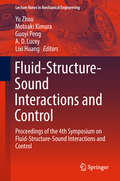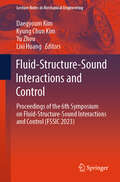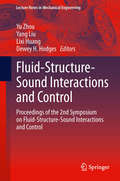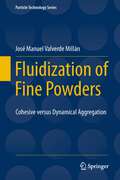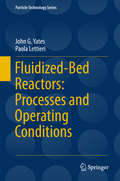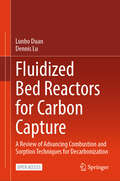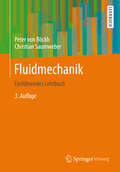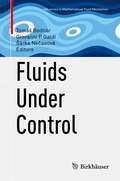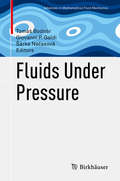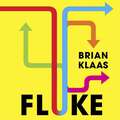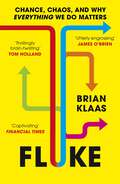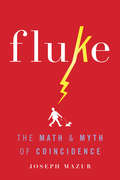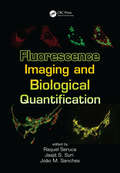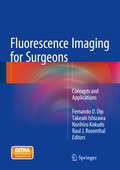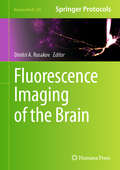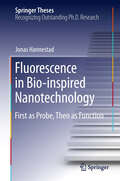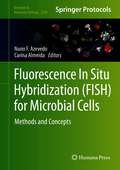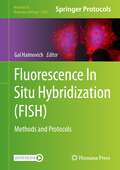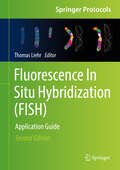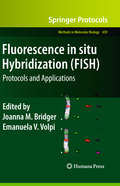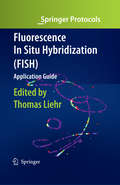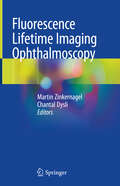- Table View
- List View
Fluid-Structure-Sound Interactions and Control: Proceedings Of The 2nd Symposium On Fluid-structure-sound Interactions And Control (Lecture Notes In Mechanical Engineering)
by Lixi Huang A. D. Lucey Guoyi Peng Motoaki Kimura Yu ZhouThis book presents the proceedings of the Symposium on Fluid-Structure-Sound Interactions and Control (FSSIC), (held in Tokyo on Aug. 21-24, 2017), which largely focused on advances in the theory, experiments on, and numerical simulation of turbulence in the contexts of flow-induced vibration, noise and their control. This includes several practical areas of application, such as the aerodynamics of road and space vehicles, marine and civil engineering, nuclear reactors and biomedical science, etc. Uniquely, these proceedings integrate acoustics with the study of flow-induced vibration, which is not a common practice but can be extremely beneficial to understanding, simulating and controlling vibration. The symposium provides a vital forum where academics, scientists and engineers working in all related branches can exchange and share their latest findings, ideas and innovations – bringing together researchers from both east and west to chart the frontiers of FSSIC.
Fluid-Structure-Sound Interactions and Control: Proceedings of the 6th Symposium on Fluid-Structure-Sound Interactions and Control (FSSIC 2023) (Lecture Notes in Mechanical Engineering)
by Yu Zhou Lixi Huang Daegyoum Kim Kyung Chun KimThis proceedings book focuses on advances in theory, experiments and numerical simulations of fluid-structure-sound interactions related to turbulence, flow-induced vibration, noise and their control. This includes important practical areas of interaction such as vehicle aerodynamics, marine and civil engineering, nuclear reactors and biomedicine. One of the special features of this book is that it integrates new emerging fields with the study of fluid-structure-sound interactions, which is not common practice but scientifically very helpful in understanding, simulating and controlling fluid-structure-sound interaction systems. This provides a broader view of the discipline from which readers will benefit greatly.
Fluid-Structure-Sound Interactions and Control
by Yu Zhou Yang Liu Lixi Huang Dewey H. HodgesWith rapid economic and industrial development in China, India and elsewhere, fluid-related structural vibration and noise problems are widely encountered in many fields, just as they are in the more developed parts of the world, causing increasingly grievous concerns. Turbulence clearly has a significant impact on many such problems. On the other hand, new opportunities are emerging with the advent of various new technologies, such as signal processing, flow visualization and diagnostics, new functional materials, sensors and actuators, etc. These have revitalized interdisciplinary research activities, and it is in this context that the 2nd symposium on fluid-structure-sound interactions and control (FSSIC) was organized. Held in Hong Kong (May 20-21, 2013) and Macau (May 22-23, 2013), the meeting brought together scientists and engineers working in all related branches from both East and West and provided them with a forum to exchange and share the latest progress, ideas and advances and to chart the frontiers of FSSIC. The Proceedings of the 2nd Symposium on Fluid-Structure-Sound Interactions and Control largely focuses on advances in the theory, experimental research and numerical simulations of turbulence in the contexts of flow-induced vibration, noise and their control. This includes several practical areas for interaction, such as the aerodynamics of road and space vehicles, marine and civil engineering, nuclear reactors and biomedical science etc. One of the particular features of these proceedings is that it integrates acoustics with the study of flow-induced vibration, which is not a common practice but is scientifically very helpful in understanding, simulating and controlling vibration. This offers a broader view of the discipline from which readers will benefit greatly. These proceedings are intended for academics, research scientists, design engineers and graduate students in engineering fluid dynamics, acoustics, fluid and aerodynamics, vibration, dynamical systems and control etc. Yu Zhou is a professor in Institute for Turbulence-Noise-Vibration Interaction and Control at Harbin Institute of Technology. Yang Liu is an associate professor at The Hong Kong Polytechnic University. Lixi Huang, associate professor, works at the University of Hong Kong. Professor Dewey H. Hodges works at the School of Aerospace Engineering, Georgia Institute of Technology.
Fluid Waves
by Richard ManassehThe book derives the mathematical basis for the most encountered waves in science and engineering. It gives the basis to undertake calculations required for important occupations such as maritime engineering, climate science, urban noise control, and medical diagnostics. The book initiates with fluid dynamics basis with subsequent chapters covering surface gravity waves, sound waves, internal gravity waves and waves in rotating fluids, and details basic phenomena such as refraction. Thereafter, specialized application chapters include description of specific contemporary problems. All concepts are supported by narrative examples, illustrations, and case studies. Features:- Explains the basis of wave mechanics in fluid systems. Provides tools for the analysis of water waves, sound waves, internal gravity, and rotating fluid waves through different examples. Includes comprehensible mathematical derivations at the expense of fewer theoretical topics. Reviews cases describable by linear theory and cases requiring nonlinear and wave-interaction theories. Supports concepts with narrative examples, illustrations, and case studies. This book aims at Senior Undergraduates/Graduate students and Researchers in Fluid Mechanics, Applied Mathematics, Mechanical Engineering, Civil Engineering, and Physical Oceanography.
Fluidization of Fine Powders
by José Manuel Valverde MillánThis book covers the rich phenomenology exhibited by fine powders when they are fluidized by a gas flow. Fine powder cohesiveness leads to poor flowability, clumping, difficulty in fluidizing, irregular avalanching behavior, etc. Despite all the inconveniences, fine powder processes pervade the chemical, pharmaceutical, agricultural and mining industries among others. The author in this book analyzes the mechanism by which interparticle adhesive forces are reduced by means of surface additives. Different techniques have been developed in the last years to assist fluidization by helping the gas flow to mobilize and break cohesive aggregates, which help to homogenize fluidization. As reviewed in this book, the use of these techniques may have a relevant impact on novel processes based on fluidized beds of fine powder and with relevant applications on leading edge technologies such as Atomic Layer Deposition on nanoparticles and CO2 capture by gas-fluidized beds of adsorbent powders. The study of fluidized beds has a marked interdisciplinary character. This book is thus intended for academic and industrial researchers in applied physics, mechanical, chemical, and environmental engineering, who are interested in the special characteristics of fine powders.
Fluidized-Bed Reactors: Processes and Operating Conditions
by John G. Yates Paola LettieriThe fluidized bed reactor is the centerpiece of industrial fluidization processes. This book focuses on the design and operation of fluidized beds in many different industrial processes, emphasizing the rationale for choosing fluidized beds for each particular process. The book starts with a brief history of fluidization from its inception in the 1940's. The authors present both the fluid dynamics of gas-solid fluidized beds and the extensive experimental studies of operating systems and they set them in the context of operating processes that use fluid-bed reactors. Chemical engineering students and postdocs as well as practicing engineers will find great interest in this book.
Fluidized Bed Reactors for Carbon Capture: A Review of Advancing Combustion and Sorption Techniques for Decarbonization
by Lunbo Duan Dennis LuThis open access book provides a perspective on CO2 capture technologies that employ fluidized bed rectors, (FBRs) involving pre-combustion gasification, oxy-fuel combustion, chemical looping combustion, calcium looping process, and low-temperature sorption. The state-of-the-art progress from the lab-scale FBRs to pilot-scale demonstration facilities is summarized, and the remaining challenges are discussed. Moreover, this book also discussed the future solutions to overcome existing barriers in the application of FBRs for CO2 capture and provided an outlook on potential advancements and improvements. The authors anticipate endeavors made herein can impel the commercialization of fluidized bed technologies for CO2 capture from large industrial sources.
Fluidmechanik: Einführendes Lehrbuch
by Christian Saumweber Peter Von BöckhDieses Lehrbuch liegt jetzt in der 3. Auflage vor. Es behandelt u.a. - die wichtige Berechnung des Druckverlustes bei der Strömung von Flüssigkeits-/Gasgemischen in Rohren - die kritische Strömung von Gasen und Flüssigkeits-/Gasgemischen - die Strömung kompressibler Fluide mit hoher Geschwindigkeit (Fanno-Linie) - Reibungsdruckverluste in quer angeströmten Rohrbündeln - Grundlagen der numerischen Lösungsmethoden - Strömungsmesstechnik und Fehlerrechnung - in Mathcad erstellte Beispiele, die im Internet abgerufen werden können. Die Studierenden lernen, mit Hilfe des Buches anspruchsvolle Apparate, wie z.B. Raketenbrennkammer, Verdampfer oder Kondensatoren für Wärmepumpen, selbständig auszulegen. Der Aufbau des Buches zeichnet sich durch eine praxisnahe, klar strukturierte und systematische Darstellung aus. Zahlreiche durchgerechnete Beispiele erleichtern das Verständnis. Die Zielgruppen Studierende des Maschinenbaus und der Verfahrenstechnik an Universitäten und Fachhochschulen
Fluids Under Control (Advances in Mathematical Fluid Mechanics)
by Tomáš Bodnár Giovanni P. Galdi Šárka NečasováThis volume explores state-of-the-art developments in theoretical and applied fluid mechanics with a focus on stabilization and control. Chapters are based on lectures given at the summer school “Fluids under Control”, held in Prague from August 23-27, 2021. With its accessible and flexible presentation, readers will be motivated to deepen their understanding of how mathematics and physics are connected. Specific topics covered include:Stabilization of the 3D Navier-Stokes systemFlutter stabilization of flow-state systemsTurbulence controlDesign through analysis Fluids Under Control will appeal to graduate students and researchers in both mathematics and physics. Because of the applications presented, it will also be of interest to engineers working on environmental and industrial issues.
Fluids Under Pressure (Advances in Mathematical Fluid Mechanics)
by Tomáš Bodnár Giovanni P. Galdi Šárka NečasováThis contributed volume is based on talks given at the August 2016 summer school “Fluids Under Pressure,” held in Prague as part of the “Prague-Sum” series. Written by experts in their respective fields, chapters explore the complex role that pressure plays in physics, mathematical modeling, and fluid flow analysis. Specific topics covered include:Oceanic and atmospheric dynamicsIncompressible flowsViscous compressible flowsWell-posedness of the Navier-Stokes equationsWeak solutions to the Navier-Stokes equationsFluids Under Pressure will be a valuable resource for graduate students and researchers studying fluid flow dynamics.
Fluke: Chance, Chaos, and Why Everything We Do Matters
by Dr Brian KlaasWhy small, chance events can divert our lives and change how we think our world works.If you could rewind your life to the very beginning and then press play, would everything turn out the same? Or could making an accidental phone call or missing an exit off the highway change not just your life, but history itself? And would you remain blind to the radically different possible world you unknowingly left behind?In Fluke, myth-shattering social scientist Brian Klaas dives deeply into the phenomenon of random chance and the chaos it can sow, taking aim at most people's neat and tidy storybook version of reality. The book's argument is that we willfully ignore a bewildering truth: but for a few small changes, our lives - and our societies - could be radically different. Offering an entirely new lens, Fluke explores how our world really works, driven by strange interactions and apparently random events. How did one couple's vacation cause 100,000 people to die? Does our decision to hit the snooze button in the morning radically alter the trajectory of our lives? And has the evolution of humans been inevitable, or are we simply the product of a series of freak accidents? Drawing on social science, chaos theory, history, evolutionary biology, and philosophy, Klaas provides a brilliantly fresh look at why things happen - all while providing mind-bending lessons on how we can live smarter, be happier, and lead more fulfilling lives.Praise for Brian Klaas:'Illuminating' Adam Grant'Passionate, insightful, and occasionally jaw-dropping' Peter Frankopan'A brilliant exploration' Dan Snow'You'll never look at the world the same way again' Ian Dunt(P) 2024 Hodder & Stoughton Limited
Fluke: Chance, Chaos, and Why Everything We Do Matters
by Dr Brian Klaas'Consistently gripping - dazzling in its sweep and thrillingly brain-twisting in its arguments' Tom HollandA provocative new vision of how our world really works - and why chance determines everything. In Fluke, myth-shattering social scientist Brian Klaas deep-dives into the phenomenon of randomness, unpicking our neat and tidy storybook version of events to reveal a reality far wilder and more fascinating than we have dared to consider. The bewildering truth is that but for a few incidental changes, our lives - and our societies - would be radically different.Offering an entirely new perspective, Fluke explores how our world really works, driven by strange interactions and random events. How much difference does our decision to hit the snooze button make? Did one couple's vacation really change the course of the twentieth century? What are the smallest accidents that have tilted the course of history itself? The mind-bending lessons of this phenomenon challenge our beliefs about the very workings of the world. From the evolution of human biology and natural disasters to the impact of global events on supply chain disruptions, every detail matters because of the web of connectivity that envelops us. So what if, by exploding our illusion of control, we can make better decisions and live happy, fulfilling lives?
Fluke: The Math And Myth Of Coincidence
by Joseph MazurA mathematical guide to understanding why life can seem to be one big coincidence--and why the odds of just about everything are better than we would think
Fluorescence Imaging and Biological Quantification
by Jasjit Suri Raquel Seruca J. SanchesThis comprehensive reference work details the latest developments in fluorescence imaging and related biological quantification. It explores the most recent techniques in this imaging technology through the utilization and incorporation of quantification analysis which makes this book unique. It also covers super resolution microscopy with the introduction of 3D imaging and high resolution fluorescence. Many of the chapter authors are world class experts in this medical imaging technology.
Fluorescence Imaging for Surgeons
by Fernando D. Dip Takeaki Ishizawa Norihiro Kokudo Raul J. RosenthalThis text presents the experiences of leading researchers and surgeons with different fluorescence methods. Chapters range from basic science of fluorescence to current clinical applications and new horizons. The first few chapters describe the historical evolution and physical principles of fluorescence and provide the foundation for the reader to understand the current scope and limits of its use in surgery. The second section focuses on the clinical applications of intraoperative fluorescence imaging including subsections on fluorescence cholangiography, applications to hepatectomy, lymph node navigation, applications to GI tract and pelvic surgery and identification of cancer tissues. The third section focuses on new frontiers including fluorescence probes, imaging systems and applications to photodynamic therapy. Authored by leaders in the development of fluorescent methods worldwide, Fluorescence Imaging for Surgeons: Concepts and Applications will have an impact on numerous medical specialists including general surgeons, colorectal and minimally-invasive surgeons and surgical oncologists. Researchers will find the book to be an invaluable resource on the latest advances in the utilization of nanoparticles and fluorescent probes.
Fluorescence Imaging of the Brain (Neuromethods #209)
by Dmitri A. RusakovThis volume looks at the latest advancements at the forefront of cellular, circuit, and neural network imaging in the brain. The chapters in this book cover topics such as super resolution imaging at the level of molecules and nanoscopic cellular compartments; the monitoring of individual synapses; physiological communication inside and among neurons and astrocytes; and the activity of targeted multi-cellular ensembles and selected populations of neurons. In the Neuromethods series style, chapters include the kind of detail and key advice from the specialists needed to get successful results in your laboratory. Cutting-edge and authoritative, Fluorescence Imaging of the Brain is a valuable resource for both novice and experienced researchers who are interested in learning more about this rapidly evolving area of optical methods and approaches that employ fluorescence sensors to better understand the versatile brain machinery.
Fluorescence in Bio-inspired Nanotechnology: First as Probe, Then as Function
by Jonas HannestadIn his thesis Fluorescence in Bio-inspired Nanotechnology, Jonas Hannestad describes the evolving field of DNA nanotechnology in a lucid and easily accessible way. A central theme in the thesis is how biological structures and mechanisms constitute a basis for the design of novel technologies. Hannestad discusses how self-assembled, nanometer-scale DNA constructs can be functionalized using fluorescent labeling. In particular, he highlights how applications are based on fluorescence resonance energy transfer (FRET). Another important contribution is the development of a lipid monolayer platform for the step-by-step assembly of DNA nanoconstructs. The work in the thesis is based on five peer-reviewed papers published in high-profile journals, all of which involve major contributions from the author.
Fluorescence in Industry (Springer Series on Fluorescence #18)
by Bruno PedrasThis book gathers 12 outstanding contributions that reflect state-of-the-art industrial applications of fluorescence, ranging from the pharmaceutical and cosmetics industries to explosives detection, aeronautics, instrumentation development, lighting, photovoltaics, water treatment and much more. In the field of fluorescence, the translation of research into important applications has expanded significantly over the past few decades. The 18th volume in the Springer Series on Fluorescence fills an important gap by focusing on selected industrial applications of fluorescence, described in contributions by both industry-based researchers and academics engaged in collaborations with industrial partners.
Fluorescence In-Situ Hybridization: Methods and Concepts (Methods in Molecular Biology #2246)
by Nuno F. Azevedo Carina AlmeidaThis volume provides a comprehensive review of concepts and protocols related to fluorescence in situ hybridization (FISH) applied to microbial cells. Chapters will serve guide for the design of new probes and the development of novel FISH-based protocols. Written in the highly successful Methods in Molecular Biology series format, chapters include introductions to their respective topics, lists of the necessary materials and reagents, step-by-step, readily reproducible laboratory protocols, and tips on troubleshooting and avoiding known pitfalls. Authoritative and cutting-edge, Fluorescence In Situ Hybridization (FISH) for Microbial Cells: Methods and Concepts aims to ensure successful results in the further study of this vital field.
Fluorescence In Situ Hybridization: Methods and Protocols (Methods in Molecular Biology #2784)
by Gal HaimovichThis volume explores the latest techniques and protocols used by researchers to address unique biological questions, model organisms not typically studied by Fluorescent In Situ Hybridization (FISH), protocols combining FISH with immunofluorescence (FISH-IF), and high-throughput experiments. The chapters in this book are divided into two parts: RNA FISH protocols and DNA FISH protocols. Part One covers methods for designing OligoPaint probes and studying distinct aspects of RNA biology such as transcription and splicing dynamics, and mRNA and small RNA expression and localization. Part Two discusses DNA repair dynamics, gene compaction, and chromatin conformation and gene rearrangements in plants, insects, and mammalian cells. Written in the highly successful Methods in Molecular Biology series format, chapters include introductions to their respective topics, lists of the necessary materials and reagents, step-by-step, readily reproducible laboratory protocols, and tips on troubleshooting and avoiding known pitfalls.Cutting edge and thorough, Fluorescence In Situ Hybridization (FISH): Methods and Protocols is a valuable resource that will benefit the broader scientific community in their studies and understanding of this important field.
Fluorescence In Situ Hybridization (FISH)
by Thomas LiehrThis book is a unique source of information on the present state of the exciting field of molecular cytogenetics and how it can be applied in research and diagnostics. The basic techniques of fluorescence in situ hybridization and primed in situ hybridization (PRINS) are outlined, the multiple approaches and probe sets that are now available for these techniques are described, and applications of them are presented in 36 chapters by authors from ten different countries around the world. The book not only provides the reader with basic and background knowledge on the topic, but also gives detailed protocols that show how molecular cytogenetics is currently performed by specialists in this field. The FISH Application Guide initially provides an overview of the (historical) development of molecular cytogenetics, its basic procedures, the equipment required, and probe generation. The book then describes tips and tricks for making different tissues available for molecular cytogenetic studies. These are followed by chapters on various multicolor FISH probe sets, their availability, and their pot- tial for use in combination with other approaches. The possible applications that are shown encompass the characterization of marker chromosomes, cryptic cytogenetic aberrations and epigenetic changes in humans by interphase and metaphase cyto- netics, studies of nuclear architecture, as well as the application of molecular cytogenetics to zoology, botany and microbiology.
Fluorescence in situ Hybridization (FISH)
by Keith Morris Joanna M. BridgerThe design simplicity and cost-effectiveness of the early Fluorescence in situ Hybridization (FISH) protocols, combined with the significant acceleration of discoveries in related technical areas like fluorescence microscopy, digital imaging, and nucleic acid technology have prompted the diversification of the original technique into an outstanding number of imaginative and useful applications, thus promoting its expansion into different areas of basic and applied research in the post-genomic era. In Fluorescence in situ Hybridization (FISH): Protocols and Applications, experts in the field portray the vibrant complexity and diversity of the current FISH protocol landscape, providing cutting-edge examples of various applications for genetic and developmental research, cancer research, reproductive medicine, diagnostic and prognostic purposes, microbial ecology and evolutionary studies. The book is divided into four convenient sections covering the core techniques, technical advancements and novel adaptations, applications for human genetics and medicine, as well as protocols for model organisms. Written in the highly successful Methods in Molecular BiologyTM series format, chapters include introductions to their respective chapters, lists of the necessary materials and reagents, step-by-step, readily reproducible laboratory protocols, and notes highlighting tips on troubleshooting and avoiding known pitfalls. Comprehensive and up-to-date, Fluorescence in situ Hybridization (FISH): Protocols and Applications aims to aid scientists from across the world in applying this tried-and-true scientific technique to their own lab's current research.
Fluorescence In Situ Hybridization (FISH) - Application Guide
by Thomas LiehrThis FISH application guide provides an overview of the principles and the basic techniques of fluorescence in situ hybridization (FISH) and primed in situ hybridization (PRINS), which are successfully used to study many aspects of genomic behavior and alterations. In 36 chapters, contributed by international experts in their particular field, the nowadays multiple approaches and applications of the powerful techniques are presented and detailed protocols are given. Described here are methods using various cell types and tissues as well as different organisms, such as mammalians, insects, plants and microorganisms. Multicolor FISH procedures and special applications such as the characterization of marker chromosomes, breakpoints, cryptic aberrations, nuclear architecture and epigenetic changes, as well as (array-based) comparative genomic hybridization studies are presented. Overall, the technique of choice is introduced for single cell analysis in human genetics, microbiology, animal and plant sciences.
Fluorescence Lifetime Imaging Ophthalmoscopy
by Martin Zinkernagel Chantal DysliThis book focuses on the emerging non-invasive imaging technique of Fluorescence Lifetime Imaging Ophthalmoscopy (FLIO). FLIO reveals unique information on retinal diseases, ranging from age-related macular degeneration and vascular diseases to hereditary retinal dystrophies. Fluorescence lifetimes enable the evaluation of disease progression before irreversible structural changes occur. The image acquisition is suitable for diagnostic purposes and follow-up examinations to investigate the natural course of disease, and to monitor the effects of possible therapies. This book fills the gap between available literature and gives state-of-the-art guidance on the principles of the FLIO technique, image acquisition, and data analysis. Written by a team of expert leaders within this field, this book will be relevant for scientists and clinicians with an interest in ophthalmoscopy.
Fluorescence Lifetime Spectroscopy and Imaging: Principles and Applications in Biomedical Diagnostics
by Laura Marcu Paul M. W. French Daniel S. ElsonDuring the past two decades, there has been an increasing appreciation of the significant value that lifetime-based techniques can add to biomedical studies and applications of fluorescence. Bringing together perspectives of different research communities, Fluorescence Lifetime Spectroscopy and Imaging: Principles and Applications in Biomedical Dia
